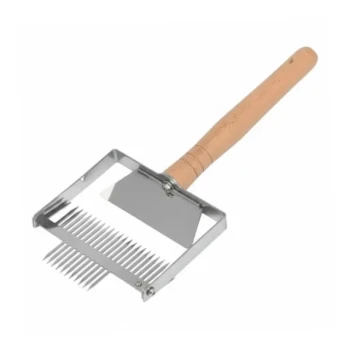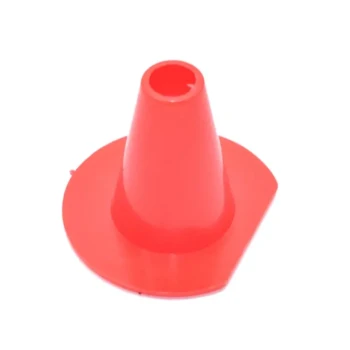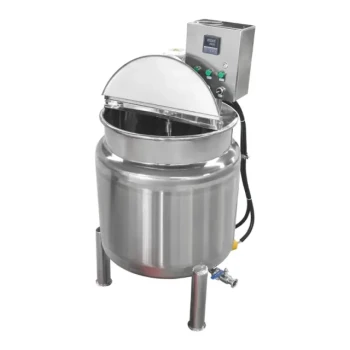The timing of your honey harvest is a critical decision that hinges on both the calendar and the specific state of your hive. For most temperate climates, the primary honey harvest and the subsequent removal of the queen excluder occur between late July and mid-August. This window marks the end of the major summer nectar flow and the beginning of the colony's preparations for winter.
Your goal is not to harvest on a specific date, but to act when the bees signal they are finished. The calendar provides a general guide, but the true indicators are the end of the local nectar flow and the presence of fully cured, capped honey in the supers.
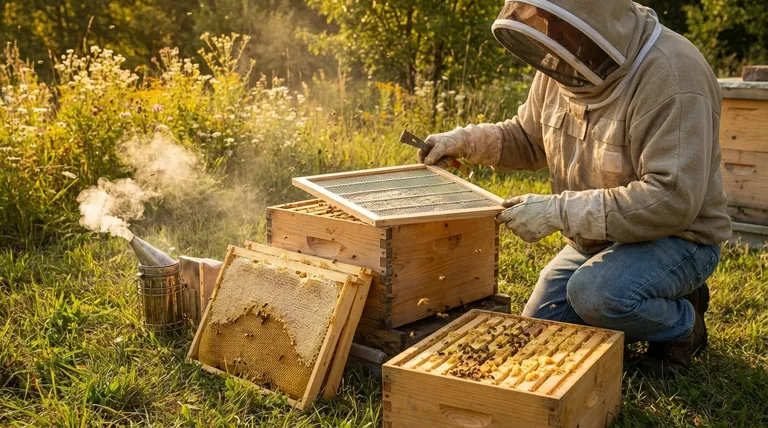
The Role of the Queen Excluder
To understand when to remove the excluder, you must first understand its purpose. It is a management tool with a specific job that, once complete, makes the excluder a liability.
What is a Queen Excluder?
A queen excluder is a screen with gaps large enough for worker bees to pass through but too small for the larger queen. It is placed between the brood boxes (where the queen lays eggs) and the honey supers (where you want pure honey stored).
Why is it Used?
Its sole function is to create a "brood-free zone" in the honey supers. By confining the queen to the lower boxes, you ensure the frames you harvest contain only honey, not a mixture of honey, pollen, and developing bees (brood).
When is it Placed?
The excluder is only added to a strong, populous hive during a major nectar flow. Adding it too early or to a weak colony can hinder buildup and impede the bees' movement, effectively creating a "honey ceiling" they are reluctant to cross.
Identifying the Prime Harvest Window
While late July to mid-August is the common timeframe, your bees and local environment are the ultimate authority. Relying on a calendar alone is a frequent mistake.
Beyond the Calendar: Reading the Nectar Flow
The harvest should coincide with the end of the primary summer nectar flow. Watch the plants in your area—are the major honey-producing flowers like clover and basswood finishing their bloom? You can also observe a slowdown in activity at the hive entrance.
Inspecting the Frames: The "80% Capped" Rule
Honey is not ready for harvest until the bees have cured it. They reduce its water content to below 18.6% to prevent fermentation and then seal the cell with a fresh wax capping.
A frame is considered ready when at least 80% of its surface is capped. Harvesting honey with large uncapped areas ("wet" honey) risks fermentation and spoilage.
Shifting from Production to Survival
Removing the honey supers marks a fundamental shift in your management strategy. The goal is no longer maximizing a surplus for yourself, but ensuring the colony has the resources and structure it needs to survive the winter. The queen excluder is central to this transition.
Understanding the Trade-offs
Timing is a balancing act. Moving too early or too late carries significant consequences for both your honey yield and the health of your colony.
Harvesting Too Early
The primary risk is unripe honey. If the water content is too high, your harvested honey will ferment. You also cut short the bees' production if the nectar flow has not truly ended.
Harvesting Too Late
Waiting too long can leave the colony with insufficient stores for winter. As temperatures drop, honey becomes thicker and harder for both you and the bees to manage. It also extends the period where the hive is vulnerable to robbing by other desperate colonies.
Leaving the Excluder on Too Long
This is the most critical mistake to avoid post-harvest. An excluder left in place through the fall can be a death sentence for the colony. It prevents the winter cluster from moving upwards to access honey stores, potentially causing them to starve just inches away from food. It also restricts the queen, preventing her from organizing the nest for winter.
Making the Right Choice for Your Goal
Your decision should be based on a combination of the calendar, local environmental cues, and direct hive inspection.
- If your primary focus is maximizing honey yield: Harvest at the very end of the major nectar flow, ensuring at least 80% of the honey is capped, but do not delay into early autumn.
- If your primary focus is ensuring colony winter survival: Be conservative with your harvest. Always leave a full deep box of honey (or equivalent) for the bees and remove the queen excluder immediately after taking the honey supers.
- If you are a new beekeeper: Prioritize colony health above all else. It is far better to take less honey and have a strong hive survive than to risk the colony for a few extra frames.
By reading the signals from the hive and the environment, you transition from simply following a schedule to becoming a true partner with your bees.
Summary Table:
| Key Event | Typical Timeframe | Primary Indicator |
|---|---|---|
| Honey Harvest | Late July to Mid-August | End of nectar flow; 80% of honey frames are capped. |
| Queen Excluder Removal | Immediately after harvest | Prevent winter starvation; allow colony to organize for cold weather. |
Equip Your Apiary for Success with HONESTBEE
Mastering the timing of your honey harvest is just one part of effective hive management. Having the right, reliable equipment is essential for maximizing yield and ensuring your colonies thrive season after season.
At HONESTBEE, we supply commercial apiaries and beekeeping equipment distributors with high-quality, durable supplies through our wholesale-focused operations. From durable queen excluders and honey supers to essential tools for inspection and harvest, we provide the foundational equipment that professional beekeepers trust.
Let's build a stronger beekeeping operation together.
Contact our wholesale team today to discuss your equipment needs and how we can support the growth of your business.
Visual Guide
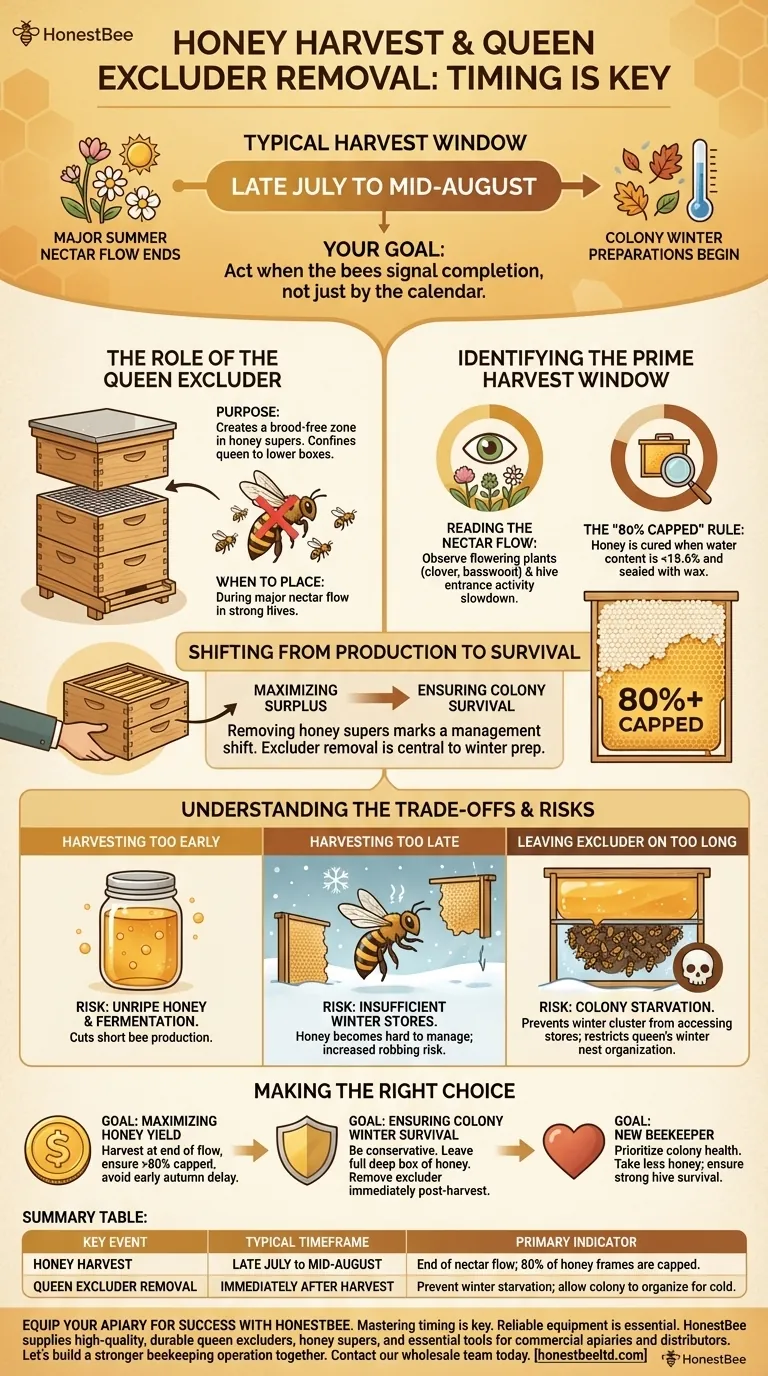
Related Products
- Premium Wood Framed Metal Wire Queen Bee Excluder
- Professional Plastic Queen Excluder for Modern Beekeeping
- High Performance Plastic Queen Excluder for Beekeeping and Apiary Management
- Plastic Queen Bee Excluder for Bee Hive Wholesale
- Stainless Steel Honey Press Wax Press with Tank
People Also Ask
- What is the primary function of a queen excluder? A Guide to Brood-Free Honey Harvesting
- What are the advantages of using queen excluders? Boost Honey Production & Hive Management
- When to put queen excluder on hive? Key Timing for Maximum Honey Production
- What considerations should a beekeeper take into account when deciding whether to use an excluder?
- What makes polyurethane foam environmentally friendly? The Surprising Benefits of a Durable, Inert Material





